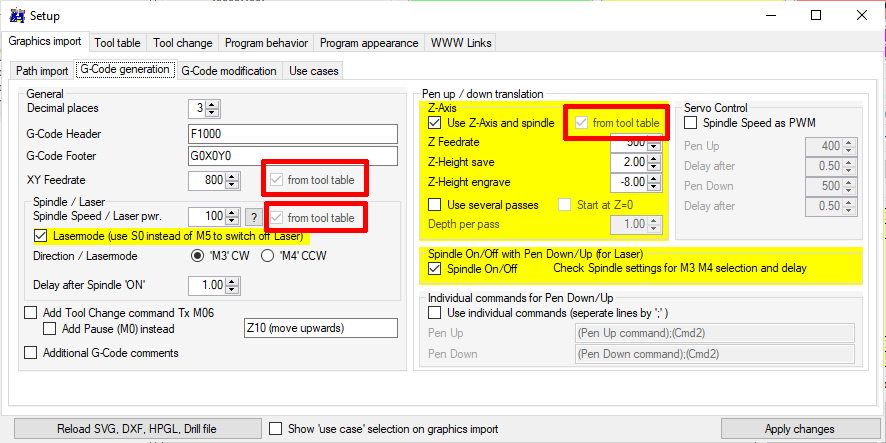

When you are very close to the point of origin, finish by hand, once you are good in X and Y, get Z down to the workpiece, you can use cigarette paper to be precise. So move the axes using the Nunchuk or the “Move” function of the TFT if you have big moves to make. Put the end mill at the “point of origin”, at the starting point of the program, it must correspond to the point of origin that there was in your software of generation of G-code, in general it is bottom left on the software, so to you left on the part to be milled.Mount a end mill adapted to the material, and of the same diameter that had been entered in the g-code generation software.The workpiece is tightened so that it does not move with the help of clamps, and it is checked whether during the machining path there is not a given moment when a clamp will end up on the way of the end mill … yes it would be sad ^^.Fix your “raw” (your material to mill) on a “martyr” (wood panel generally in soft wood that one puts between the tray and our workpiece to spare our beautiful tray!).DXF file, set up your machining (there are tutorials on the internet) and save the obtained. Then to have a fast empty movement, go in the tab “Coordinates”, and in the boxes “Rapid feed XY and Z” indicate the desired movement speed (I put 2000 and 800mm / min) and save. On the “Presets” tab, choose “GRBL” from the list and at the bottom in “File extension” write “gcode” and save Whatever your G-code generation software, check the G-code start and End G-code options which must contain the spindle start / stop commands that control the relay (M3 at start G-code for start the spindle) (M5 end G-code to turn off the spindle) On Estlcam it is already set to original. I will not do a tutorial on these programs, you will find many on internet.

If you use Fusion360, please use this post processor.


#Drawing software for grbl plotter trial
#Drawing software for grbl plotter generator
To do this we need a G-code generator software, for example: The G-code him, is a script that has each line gives an order to the machine for example X and Y go to such position at such speed … It’s all well and good, but our machine does not recognize this DXF! Indeed, it is not machine language, it must be transformed into machine language, in. This DXF is a drawing called “vector”, to make it simple and short, what differentiates it from a jpeg for example is that it contains information, for example, such hole is in such a place and of such diameter, this line at such place measures so many millimeters … To mill your first part, usually we start from a “.dxf” file, either downloaded or created by your favorite CAD software.


 0 kommentar(er)
0 kommentar(er)
